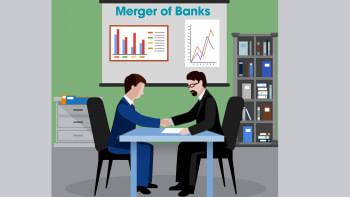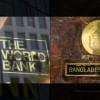When does a bank fail?

In an economy, banks facilitate the flow of funds to fuel its growth. The main objective of a bank is to maximise its shareholders' wealth by ensuring that its cash flows are sizeable and regular. But the cash flows are interrupted by various risks, which can make banks susceptible to failure.
There are four main reasons why banks fail: credit risk, interest rate risk, foreign exchange risk, and liquidity risk (bank run). Any loss arising from these risks is adjusted against capital. But when the loss exceeds capital, a bank becomes insolvent. In the face of a serious liquidity crisis, the ultimate result is bank failure.
The Royal Bank of Scotland
The Royal Bank of Scotland (RBS) was established in 1727. Before 2007, the bank grew rapidly and became a major player in the international banking market. Profits grew from £1.8 billion in 2000 to £5.6 billion in 2006. However, its risk appetite was greater than that of its peers. The bank had capital shortage and greater risk concentrations, but these did not cause sufficient concern. The bank appeared solvent due to its sound credit rating.
The RBS also ran a risky and aggressive funding profile, relying heavily on short-term wholesale markets to fund its investments. For instance, it was a net borrower from the interbank market of £72 billion in 2006 versus only £3 billion in 2000. Additionally, RBS bought another risky bank, ABN Amro, with limited due diligence and financed the acquisition with mostly short-term debt rather than capital raising. For example, of the €22.6 billion that RBS paid for the acquired bank, more than half was funded by debt repayable within a year. High levels of risk led to massive losses with the RBS failing in August 2008 and being nationalised in October 2008 when the government injected £45.5 billion of equity capital.
Dexia
Dexia, a Franco-Belgian bank, was formed in 1996. This bank focused on lending to the public sector at very attractive rates, depending on sophisticated financial techniques. It heavily borrowed short-term funding to make long-term loans, and enhanced profitability with cheap funding. With the risk of maturity mismatch between assets and liabilities, Dexia still earned a strong credit rating and expanded its balance sheet from €258 billion in 2000 to €651 billion in 2008, before collapsing after a liquidity crisis in October 2008 and needing to be rescued by the state.
Dexia purchased the US credit insurer Farm Service Agency (FSA) in 2000, but FSA's exposures and losses caught up with Dexia. It faced a serious liquidity crunch because more than half of its liabilities matured over less than three months. Its cost of risk was only €9 million in 2007, which increased to €716 million in 2008. On September 29, 2008, Dexia applied to the French, Belgian, and Luxembourg governments for support and received funding.
Ironically, Dexia faced a second liquidity crisis due to a fall in interest rates by nearly one percent during the summer of 2011, requiring huge collateral to cover its derivatives positions. There was a substantial increase in its usage of short-term secured funding, which brought about a liquidity problem. In September 2011, Dexia faced yet another liquidity crisis and was rescued again by France, Belgium, and Luxembourg to avoid bankruptcy. The failure at Dexia cost taxpayers over €18 billion.
Halifax Bank of Scotland
Halifax Bank of Scotland (HBOS) was created in 2001 by merging Halifax and the Bank of Scotland. At the time, HBOS was the largest provider of mortgages and loans in the United Kingdom, with £312 billion in assets, £11 billion in equity, annual profits of £1.6 billion, and around 20 percent market share. By 2006, its profits had grown to £5.7 billion and return on equity was strong at 21 percent. International lending was growing at a rate of 24 percent, and its growth in international markets even accelerated in 2007.
HBOS was dominant in all areas of property-related lending and investment, taking equity stakes in addition to traditional banking loans. But it was not cautious when expanding into property lending. Its risk appetite raced ahead of its risk management capabilities. The bank demonstrated incompetence in the riskier areas of its expansion. In late 2008, the capital markets began to lose confidence in HBOS. The stock price collapsed and borrowing in the markets became difficult. Almost all areas of HBOS' business began to face huge losses. By the end of 2008, HBOS failed and was taken over by Lloyds Banking Group on January 19, 2009.
Merrill Lynch
Merrill Lynch was a publicly traded investment bank in the US. It existed independently from 1914 until January 2009 before being acquired by the Bank of America. Its residential mortgage loans rose to $100 billion in 2007, from $58 billion in 2005. After the dotcom boom, Merrill Lynch invested heavily in collateralised debt obligation (CDO)—a complex financial asset backed by a pool of loans and other assets—and its revenues grew from $5 billion in 2004 to $8 billion in 2006. This signalled risks which the company's management was not concerned about mainly because of having strong rating and contribution of CDO to revenue. However, losses began to mount in 2007.
The mortgage assets continued to be under pressure and Merrill Lynch was forced to reduce its risk and sell assets at a loss. The bank reported a $24.7 billion loss related to CDO and subprime in 2007. It faced a record loss of $37.9 billion in 2008, resulting in liquidity shock. It became clear to the management that a rescue by another bank was the only option for survival. Mounting losses at Merrill Lynch led to the acquisition of it by Bank of America and the merger took place officially on January 1, 2009.
The case studies above represent relatively recent failures in the banking industry and how they came about. The RBS case highlights governance and risk management failures in multiple areas. The bank's solvency was weak and maturity mismatch was significant. Its extreme risk appetite was worsened by its acquisition of another risky bank. There was also a lack of supervisory oversight.
Meanwhile, the Dexia case shows how a public sector banking model, which appears low-risk, can be vulnerable to unexpected changes. The situation was not only risky but also proved it was impossible for Dexia to adapt to a volatile market environment.
The HBOS case indicates risk management, governance, and regulatory failures that led to its problems. The management, stock analysts, and rating agencies failed to detect the scale of HBOS' riskiness. And in the case of Merrill Lynch, the management failed to understand the risks accumulated through its business being limited to specific areas. The supervisory response to the abnormal growth of the bank was impractical.
Risks exist in all business models, in all countries, in every institution, and at all times. Hence, risks have to be identified and their scale has to be determined first. Then, these risks must be managed with the right approach so that they are addressed and not accumulated.
Dr Md Main Uddin is professor and former chairman of the Department of Banking and Insurance at the University of Dhaka. He can be reached at [email protected]
Views expressed in this article are the author's own.
Follow The Daily Star Opinion on Facebook for the latest opinions, commentaries and analyses by experts and professionals. To contribute your article or letter to The Daily Star Opinion, see our guidelines for submission.


 For all latest news, follow The Daily Star's Google News channel.
For all latest news, follow The Daily Star's Google News channel. 











Comments